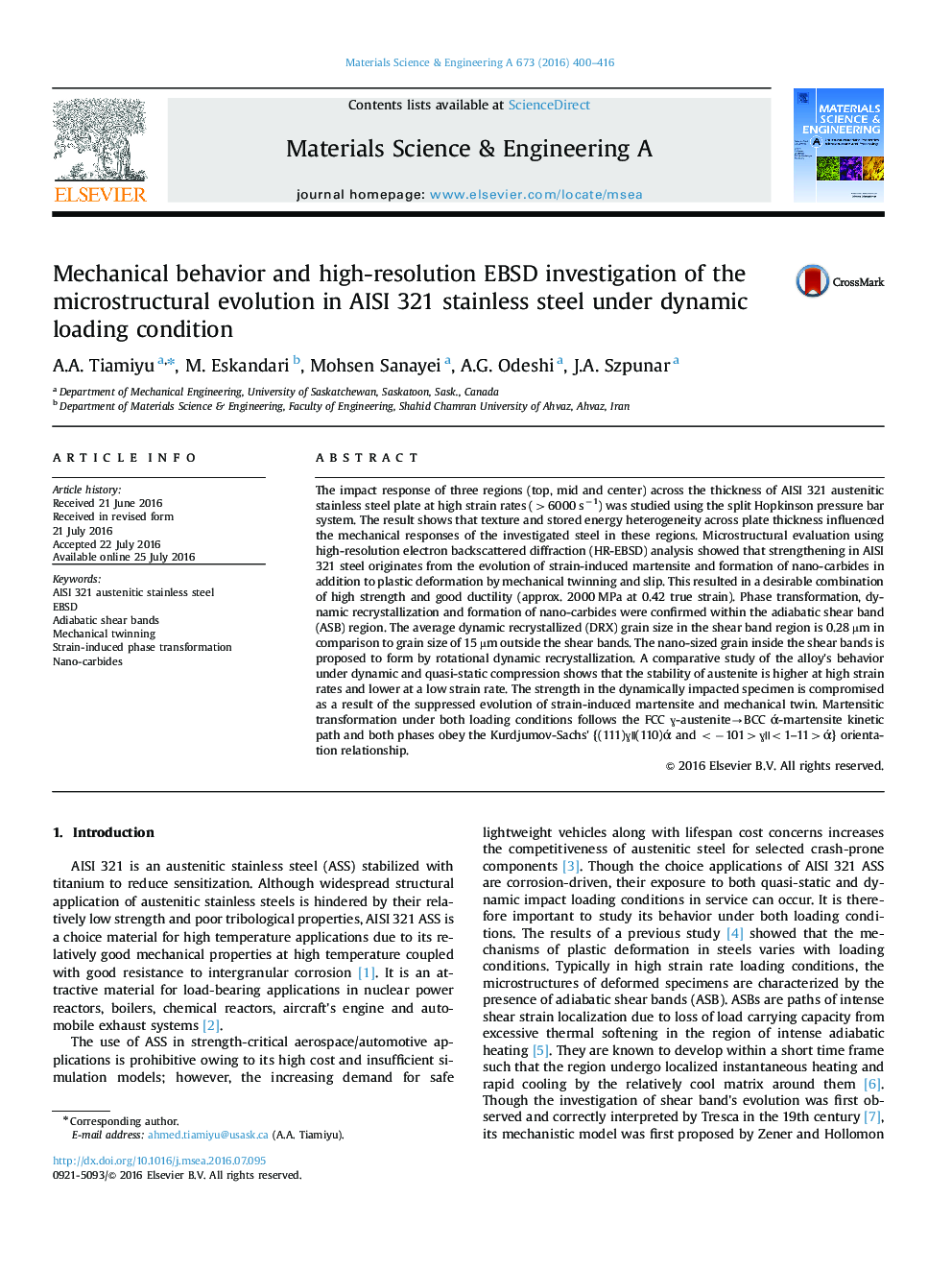| کد مقاله | کد نشریه | سال انتشار | مقاله انگلیسی | نسخه تمام متن |
|---|---|---|---|---|
| 1573149 | 1514670 | 2016 | 17 صفحه PDF | دانلود رایگان |
عنوان انگلیسی مقاله ISI
Mechanical behavior and high-resolution EBSD investigation of the microstructural evolution in AISI 321 stainless steel under dynamic loading condition
دانلود مقاله + سفارش ترجمه
دانلود مقاله ISI انگلیسی
رایگان برای ایرانیان
کلمات کلیدی
موضوعات مرتبط
مهندسی و علوم پایه
مهندسی مواد
دانش مواد (عمومی)
پیش نمایش صفحه اول مقاله

چکیده انگلیسی
The impact response of three regions (top, mid and center) across the thickness of AISI 321 austenitic stainless steel plate at high strain rates (>6000 sâ1) was studied using the split Hopkinson pressure bar system. The result shows that texture and stored energy heterogeneity across plate thickness influenced the mechanical responses of the investigated steel in these regions. Microstructural evaluation using high-resolution electron backscattered diffraction (HR-EBSD) analysis showed that strengthening in AISI 321 steel originates from the evolution of strain-induced martensite and formation of nano-carbides in addition to plastic deformation by mechanical twinning and slip. This resulted in a desirable combination of high strength and good ductility (approx. 2000 MPa at 0.42 true strain). Phase transformation, dynamic recrystallization and formation of nano-carbides were confirmed within the adiabatic shear band (ASB) region. The average dynamic recrystallized (DRX) grain size in the shear band region is 0.28 µm in comparison to grain size of 15 µm outside the shear bands. The nano-sized grain inside the shear bands is proposed to form by rotational dynamic recrystallization. A comparative study of the alloy's behavior under dynamic and quasi-static compression shows that the stability of austenite is higher at high strain rates and lower at a low strain rate. The strength in the dynamically impacted specimen is compromised as a result of the suppressed evolution of strain-induced martensite and mechanical twin. Martensitic transformation under both loading conditions follows the FCC É£-austeniteâBCC ά-martensite kinetic path and both phases obey the Kurdjumov-Sachs' {(111)É£||(110)ά and <â101>É£||<1-11>ά} orientation relationship.
ناشر
Database: Elsevier - ScienceDirect (ساینس دایرکت)
Journal: Materials Science and Engineering: A - Volume 673, 15 September 2016, Pages 400-416
Journal: Materials Science and Engineering: A - Volume 673, 15 September 2016, Pages 400-416
نویسندگان
A.A. Tiamiyu, M. Eskandari, Mohsen Sanayei, A.G. Odeshi, J.A. Szpunar,